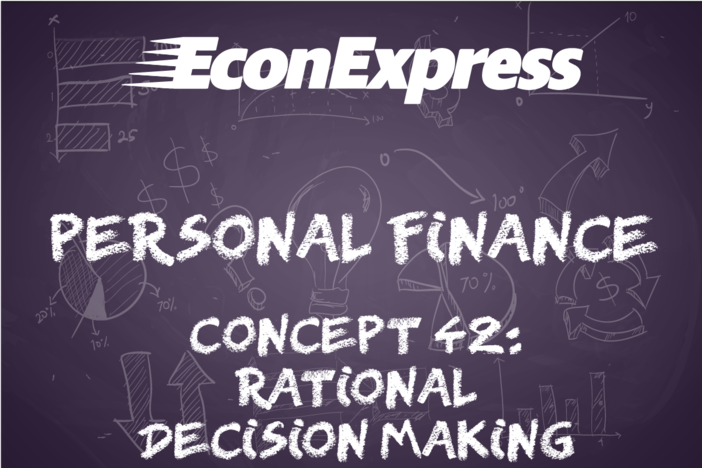Concept 50: Insurance
Overview: Insurance commercials, billboards, and ads are all over the place. Have you ever stopped to ask why? Why do all these companies want you to buy insurance from them so badly? Do you even need insurance? This lesson is a great starter on how insurance works.
Learn
Beginner

Risks are everywhere in life. Driving or riding in a car, owning property, opening a business or even making future travel plans all involve degrees of risk, meaning they might result in bodily harm or financial loss. Some people choose to avoid risks as much as possible while others (like entrepreneurs and skydivers) embrace risk. One way to reduce risk is through insurance. Insurance is a legal contract between two parties – the insured and the insurer – where the insurer agrees to pay or reimburse for losses or damages to a person, or to an asset owned by the insured. In exchange, the insured agrees to pay money up front to the insurer even if no losses or damages ever occur. All insurance works basically the same way.
There are many different types of insurance (musicians can even insure their hands or voices!), but the primary categories are described below.
- Property: protects specific, tangible, assets like a home, jewelry, music equipment, etc
- Auto: similar to property, but specific to a vehicle and (usually) the occupants of the vehicle. Basic auto insurance is legally required in most states in the United States.
- Health: pays for medical services and/or medicine
- Disability: covers a portion of a person’s paycheck in the event they are unable to work due to specified conditions. This typically comes in short-term and long term.
- Life: money paid to a family when the policyholder dies. In this case, the company is assuming the individual will live for a long time and pay in more than the company pays out.
There are numerous other types of insurance -- you may have heard of celebrities getting things like their hair, legs, or even tastebuds insured. The bottom line is you can get anything insured as long as you can find an insurer willing to take the risk, at a price you can agree upon.
Intermediate

The price an insured person pays for their insurance policy is known as a premium. This is an agreed upon amount that must be paid to the insurer (usually an insurance company) even if no damage ever occurs. When you hear on commercials, for example, that insurance companies can “save you money,” they often mean they can lower your premium.
What is to stop people, then, from taking out insurance and then acting recklessly and intentionally causing damage, so they can get money and get a new car or upgrade their house? Aside from common sense and decency, insurance companies often require a deductible. This is money that must be paid by the insured before the insurance company will pay their share. Assume your car is damaged from a falling tree limb, and the damage is $1,000. If your insurance policy has a $500 deductible, then you are responsible for the first $500, and the insurance company pays the rest.
Premiums and deductibles typically have inverse relationships. An insurance policy with a high premium is likely to have lower deductibles and vice versa. In addition, reporting claims – requesting payment for damages – can result in increased premiums in the future.
Advanced

Insurance works off a basic law of averages. Assume a small auto insurance company insures 1,000 drivers. What is the likelihood that all 1,000 drivers will have a serious accident all at the same time? While the actual mathematical answer depends on a huge list of variables, the short answer is “almost none.” Insurance companies, therefore, have a huge incentive to sell as many low-risk policies as possible. The more policies they have, the more money comes into the pot so that when one insured person DOES have a serious accident, the company has enough money to cover it.
Insurance companies also make heavy use of risk assessment strategies and experts called actuaries who try to determine how much various risks are worth and the price the company should charge for policies. In Georgia, for example, workers who get health insurance from the state health plan must declare on a legal document whether or not they have smoked cigarettes in the past year. If the answer is yes, their health premiums are significantly higher ($960 more for 2020). Why? Smokers tend to develop more health problems and are therefore more likely to dip into the pot. This same thinking explains why teens pay more than adults for car insurance and why a nightclub that serves alcohol pays more for property insurance than a movie theater. Understanding this model will help you understand national debates surrounding things like mandatory healthcare and whether companies should have to cover pre-existing conditions.
Click a reading level below or scroll down to practice this concept.
Practice
Assess
Below are five questions about this concept. Choose the one best answer for each question and be sure to read the feedback given. Click “next question” to move on when ready.
Social Studies
Describe how insurance and other risk-management strategies protect against financial loss.
List and describe various types of insurance such as automobile, health, life, disability, and property.
Explain the costs and benefits associated with different types of insurance, including deductibles, premiums, shared liability, and asset protection.
Describe how insurance and other risk-management strategies protect against financial loss.












